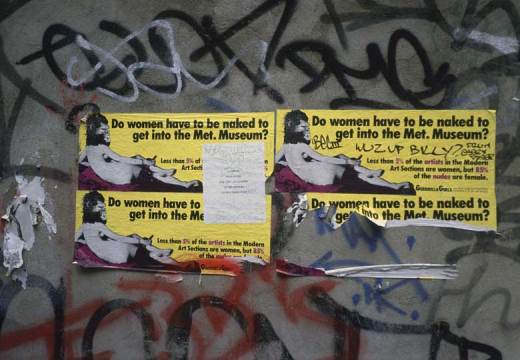How would you feel as the curator of the first retrospective of the work of Michaelina Wautier (1604–89) if you’d never dared dream that the exhibition was even possible? Right now there is an enormous jigsaw puzzle in Antwerp Central Station, which allows every passer-by a chance to put the pieces of Wautier’s most important work, the Triumph of Bacchus (n.d.), back together. Bus shelters are covered in a reproduction of Two Bubble-Blowing Boys (n.d.), a scene of children blowing bubbles and enjoying themselves, reminding the viewer that life is as fleeting as soap bubbles. Portrait of Two Girls as the Saints Agnes and Dorothy (n.d.) has already become a firm favourite with the public. Heading towards the Museum aan de Stroom (MAS), you can see banners with Wautier’s self-portrait fluttering on the esplanade. Every major newspaper and art magazine in Belgium has published articles about the exhibition. I am euphoric, but also concerned, because I know only too well that it could have turned out very differently.
I discovered Michaelina Wautier back in 1993, when attending a symposium at the Kunsthistorisches Museum in Vienna. I’d wanted to view a portrait attributed to Van Dyck that was in storage. A curator led me down long corridors in which ‘second class’ Flemish paintings were stored. As I was leaving the stores, my eye fell upon a monumental piece I wasn’t familiar with. Looking closer, I saw that it was an enormous Triumph of Bacchus, executed in a style I didn’t immediately associate with the 17th-century Antwerp School. I learned that the work had been recorded in 1659 in an inventory commissioned by the Archduke Leopold Wilhelm, of paintings he had acquired in Brussels, where Wautier lived. The curator noted that it had been painted by a woman: ‘Jungfrau Magdalena Wautier’. While the Triumph of Bacchus is Wautier’s greatest work, it is by no means her only one. Very soon a small body of work had been assembled – the 15 fully signed paintings that had survived served as the basis for attributing 10 more works to her.

Triumph of Bacchus (n.d) Michaelina Wautier. Kunsthistorisches Museum, Vienna
Doing justice to an artist no one knows is quite an undertaking. Just writing an article about a 17th-century artist won’t bring them into the light, and publishers aren’t keen on publishing books about completely unknown painters. I decided that an exhibition was the only way to make a difference. After all, visitors would be impressed by the quality of the work and would want to know more about the forgotten Michaelina Wautier’s talent. I began looking for a museum prepared to take up the challenge of setting up either a modest or a major exhibition, but it soon became clear that museum directors think like publishers. Organising an exhibition about an unknown 17th-century female artist, they thought, would be financially catastrophic for their museums. Besides, curators can also suffer from prejudice: if an artist is claimed to be exceptional, they wonder why hasn’t he or she been paid any attention before, never really pausing to think about what makes someone a famous – or forgotten – artist.
In light of the city festival ‘Antwerp Baroque 2018. Rubens Inspires’, a programme putting together as many aspects of the baroque as possible was developed, including Flemish baroque artists such as Rubens, Van Dyck and Jordaens, and now Wautier. She has finally been given a chance. While she wasn’t particularly inspired by Rubens, her style does show flashes of Antwerp baroque. In 1643, Paulus Pontius, an Antwerp engraver who had worked with Rubens, made a copper engraving based on Wautier’s portrait of the artillery general Andrea Cantelmo, and Wautier had bought panels in the city for the two flower garland scenes she painted.
Only the generous investment of a variety of organisations has made it possible to put an unknown painter on the map. Antwerp Baroque is financed by Toerisme Vlaanderen and the City of Antwerp. The Rubenshuis and its director Ben van Beneden have been involved right from the outset, publishing a bilingual catalogue for the exhibition at the MAS, Antwerp’s most spectacular museum.
The exhibition has exceeded my wildest expectations. While it’s a good thing that blockbusters attract lots of visitors and make lots of money for museums, at the same time not giving forgotten but fascinating artists a chance is inexcusable. Art history has many faces and nuances, and it would be a shame if, as a result of this policy, only the ‘consecrated heroes’ get to represent the history of art.
Translated from the Dutch by Susan Ridder.
‘Michaelina Wautier: Baroque’s Leading Lady’ is at the Museum aan de Stroom, Antwerp, until 2 September.
From the July/August 2018 issue of Apollo. Preview and subscribe here.














![Masterpiece [Re]discovery 2022. Photo: Ben Fisher Photography, courtesy of Masterpiece London](http://zephr.apollo-magazine.com/wp-content/uploads/2022/07/MPL2022_4263.jpg)
‘Like landscape, his objects seem to breathe’: Gordon Baldwin (1932–2025)